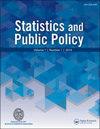Mathematics of Nested Districts: The Case of Alaska
IF 1.5
Q2 SOCIAL SCIENCES, MATHEMATICAL METHODS
引用次数: 14
Abstract
ABSTRACT In eight states, a “nesting rule” requires that each state Senate district be exactly composed of two adjacent state House districts. In this article, we investigate the potential impacts of these nesting rules with a focus on Alaska, where Republicans have a 2/3 majority in the Senate while a Democratic-led coalition controls the House. Treating the current House plan as fixed and considering all possible pairings, we find that the choice of pairings alone can create a swing of 4–5 seats out of 20 against recent voting patterns, which is similar to the range observed when using a Markov chain procedure to generate plans without the nesting constraint. The analysis enables other insights into Alaska districting, including the partisan latitude available to districters with and without strong rules about nesting and contiguity. Supplementary materials for this article are available online.嵌套地区的数学:阿拉斯加的例子
摘要在八个州,“嵌套规则”要求每个州的参议院选区由两个相邻的州众议院选区组成。在这篇文章中,我们调查了这些嵌套规则的潜在影响,重点关注阿拉斯加,在那里,共和党在参议院占2/3的多数,而民主党领导的联盟控制着众议院。将当前的众议院计划视为固定的,并考虑所有可能的配对,我们发现,仅配对的选择就可以在20个席位中产生4-5个席位,与最近的投票模式相反,这与使用马尔可夫链程序生成没有嵌套约束的计划时观察到的范围相似。该分析使人们能够深入了解阿拉斯加的区划,包括有和没有关于嵌套和邻接的严格规则的区划者可以使用的党派纬度。本文的补充材料可在线获取。
本文章由计算机程序翻译,如有差异,请以英文原文为准。
求助全文
约1分钟内获得全文
求助全文
来源期刊

Statistics and Public Policy
SOCIAL SCIENCES, MATHEMATICAL METHODS-
CiteScore
3.20
自引率
6.20%
发文量
13
审稿时长
32 weeks
 求助内容:
求助内容: 应助结果提醒方式:
应助结果提醒方式:


